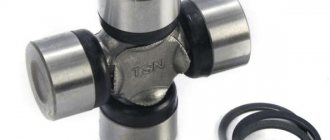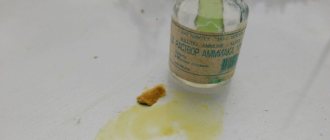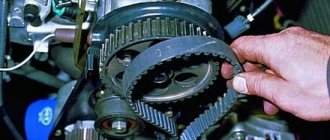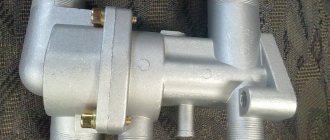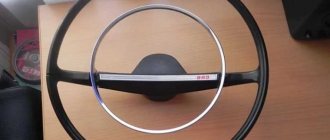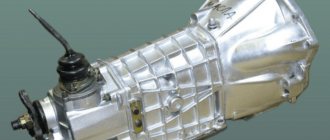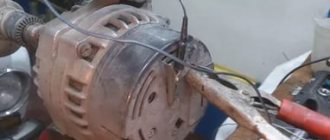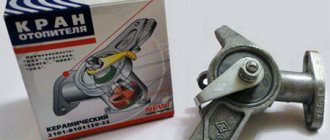Necessary tool
To press in silent blocks at home, you will need the following tools: a set of wrenches, a jack, new hinges, a pry bar. For lubrication you will need to use machine oil or other types of lubricant.
You will also need special mandrels for pressing in silent blocks, as an alternative - pieces of pipe with the required diameter, as well as a press for pressing in a new rubber-metal hinge. At home, this press can serve as a regular vice. You can also prepare a set of sledgehammers, but you must maintain high precision in the work.
How to check silent blocks
To press in the hinges, you need to inspect them thoroughly, making sure that their replacement is definitely necessary. To do this, you need to visually inspect the silent block and check its integrity. You need to make sure that the rubber on the hinge does not swell or crack. Check the play in the parts; if they exceed the size, then replacement is necessary. There is no need to delay this work; if it is not done in a timely manner, problems may arise that will lead to a complete replacement of the suspension arm.
Standard reasons that indicate their malfunction:
- poor handling;
- when driving over uneven surfaces, knocking sounds appear in the suspension;
- tire wear occurs unevenly;
- problems with wheel alignment adjustment.
Press-fitting instructions
At the initial stage, it is necessary to visually assess whether the new silent block is suitable for a particular case. This condition must not be neglected, so that later it will not be too late. There are often cases when the outer part fits perfectly, but the inner part does not, and vice versa. Once you determine that the parts will fit exactly, you can proceed to the next step. To do this, you should use a vice to help press it correctly. This method is safer and more accurate.
You can also use hammers and sledgehammers, but you need to be more careful and carefully monitor the accuracy of the process.
Thus, you will need to land several hits. If after this the broken silent block is firmly held in the hole, you need to knock it out. For this work, special mandrels are used for pressing silent blocks or two pieces of pipe. The diameter of one of these parts must correspond to the parameters of the outer joint bushing. When knocking out a part, you do not need to worry about damaging it, since it is faulty. This process is carried out with a regular hammer.
You can make it easier and faster to knock out the old hinge by heating it with a special burner. It is worth remembering that as a result of this procedure, the part breaks completely.
After knocking out is completed, the eyelet in which the hinge was located must be cleaned of dust, dirt, and so on. The seat for the new part must be perfectly smooth and even. There should be no mechanical damage or various scratches on it. In addition, there should also be no sharp edges.
After cleaning the seat, its surface must be treated with lubricant. If this is not available, you can use a regular soap solution. A device such as a metal polyurethane bushing must also be lubricated. Having completed the lubrication of the seat, you can begin to clamp the lever in a vice. In this case, it will be necessary to install a silent block perpendicular to it. This work is done as smoothly as possible. The further normal functioning of your machine depends on this.
Next, you will need to choose how to press in the silent block - press it in or drive it in with a sledgehammer. To reproduce this process, you will need metal tubes or mandrels for pressing silent blocks, one of which will need to hold the lever. And the other tube must be leaned against the side to avoid damage to the hinge when working with a vice or hammer.
The main difficulty with this work may be the difficulty of pressing the hinges into their original place. To perform this procedure, I recommend using a special press to press them in and out with the levers, as well as a mandrel for pressing in the silent blocks. You can also use improvised means, such as pieces of pipe and a sledgehammer, but you should be very vigilant and attentive, since this process requires high precision and dexterity so that the result is a whole polyurethane insert.
You can press in silent blocks with your own hands only on the front and rear parts of the suspension. If you need to replace rubber-metal joints in engine or gearbox components, you should contact a specialist. This is necessary precisely because replacing parts in such units is a labor-intensive process. To implement it correctly, you must have repair experience and a good knowledge of the main components of the car's structure. If you lack experience and knowledge, it is better not to test your luck and entrust your car to specialists. Because, in addition to the time spent, you will spend a lot on replacing silent blocks.
Press-fitting methods
The silent block is inserted into the suspension arm with quite significant force. You can’t do this without special devices. Service stations use special presses. If you don't have one, you'll need the tools that DIYers usually use for pressing.
To properly press in the silent bands yourself, stock up on:
- jack;
- wrenches;
- mount;
- machine oil;
- new hinge.
You will also need special frames for pressing. The press can be replaced with a regular vice. Sledgehammers can also come in handy.
First
The best way to install the silent, as when pressing out, is to use a vice.
Pressing procedure:
- Thoroughly clean the part with sandpaper, and then use it to treat the seat. It is necessary to remove rust from the removed part.
- Generously lubricate the eye with a lubricant, such as Litol. If you don’t have it on hand, you can get by with a soap solution.
- Install the lever, place the silent on top and apply pressure through the mandrel to the metal spacer. It will gradually drive the spare part to the right place.
Second
If you don’t have a press in your garage, you can press the silent in using a jack or a vice. Their operating principle is almost the same as that of a press. First install the lever, then the bushing and spacer. Then, using the power of a vice or jack, the part is pressed into a lever.
Third
If the silent is small in size, it can be returned to its place using a press-puller, through which it was pulled out of its habitual place. The principle of performing the work is the same as when pressing. For pressing, a pin and a thick washer are used.
Fourth
This method is based on the use of physical force. The parts are pressed using a strong sledgehammer. Experienced car enthusiasts and craftsmen do not recommend using this pressing method. The part may be pressed in this way, but the result and quality of the work performed are unpredictable.
To place a knot, a silent is placed on the lever, and then it is struck quickly and with great force. A strong blow will cause the part to enter the lever.
The sledgehammer pressing method has many disadvantages:
- it is difficult to ensure the correct movement of the part; it may fit crookedly into the landing site;
- rubber “sticking” occurs;
- there is a risk of deformation of the lever and silent.
Sledgehammer blows are extremely difficult to control. Often, after such crimping, you have to go to a service station to redo the work that was done incorrectly. Before you take a sledgehammer, you should carefully weigh your abilities.
Fifth
This method is based on using the car's own weight. To implement this method, stock up on a hydraulic or screw-type jack.
Procedure:
- Place a jack under the car and remove the wheel.
- Place the lever with a new silent under the hub.
- Gradually lowering the jack, press the weight of the car.
The disadvantage of this method is that it is unsafe and difficult to implement. It is also difficult to control the correct fit of the silent.
Video “Pressing in silent blocks”
The recording shows one of the ways to replace silent blocks when there is no press at hand.
So, after diagnosing the suspension at OD, I had to replace the rear silent block of the front suspension arm.
In my case, the silent block is pressed into an aluminum part, and to replace it we will need to dismantle this part, press out the old silent block from it, and press in a new one.
We start the work by hanging the car on a jack, just in case, so as not to die under the weight of the iron friend in the event of an emergency, we put something under the wheel.
Having previously lubricated the bolts with WD-40, unscrew them (3 pieces on each side).
Then, slightly prying the lever with a pry bar, pull it down and simply remove the part with the silent block from the lever with your hands.
For pressing/pressing we will use a garage vice.
To exit the silent block, it is necessary to provide free space behind the part; to do this, we place pieces of plywood on the back of the part; in front, to push out the silent block, we use a 32 head from the kit.
New and old silent block.
We press the new silent block into the aluminum part, and also put plywood on it so that the parts are not crushed by the vice.
Next, having lubricated the hole in the silent block with liquid soap, we put it on the lever and fasten it with new bolts with a tightening torque of 50 Nm on the smaller bolts and 70 Nm on the larger ones.
We do the same on the other side.
Comments 55
One day the thread on the vice will stretch, this must be done hydraulically...
Not everyone has a hydraulic press in their garage, and a good vice will not withstand that.
Hmm... that's a common thing...
beautiful, I do almost the same thing, I just welded some stuff like they do in services with a jack and it turns out pretty good too!
You can also put heat shrink on the lever. I did the same for myself and there are no rattles on the little things.
Last week I carried out an identical procedure in my Subaru. 90% similarity! 1 so he changed it, and on the second he tore off the cheek at the root, motionless. Then I went to the Kents for abs.
50n/m +90 degrees 70n/m + 135 degrees. Bolts must be changed.
Everything is cool, but I broke my father’s teeth when re-attaching. Teski was brewed, but he didn’t talk to me for two days :))
Well done! Did a great job! But there is one “but”! And it lies in the fact that this procedure will be enough for about 10 thousand km or even less. The thing is that in addition to the wear of the silent block, the seat on the lever (the one with the hexagon) wears out. In your case (metal lever), two types of repairs are acceptable (preserving the original lever), namely: 1. replacement with a s/w one from Audi s3 2. Remaking the original lever. In the first case, you simply re-press the s/b. In the second, it is necessary to saw off the part of the hexagon protruding from the s/w, insert a bolt with a washer and tighten it with a nut. In the post in the second photo you can see the protruding part of the hexagon. Approximately 4 mm is sawed off. With this procedure, you can forget about these s/b. The bolts from the Focus II hubs fit perfectly, the bolt length and washer diameter are perfect. Once I get a car like this for repair, I’ll be sure to post a photo.
Front arm silent blocks
Do-it-yourself pressing and pressing of silent blocks: description of work, materials and methods
Everyone who has a car is familiar with the problem when there is a need to press out or press in silent blocks.
You don’t always want to turn to specialists, and doing it yourself is much more pleasant. Thanks to this article, you will learn what silent blocks are, why they are needed, and most importantly, how to press them in and press them out at home using different methods.
This word is of foreign origin. Translated from English, silent means silence, and block means detail.
A silent block, or simply “silent,” is a rubber-metal component; in ordinary words, these are two bushings that are connected to each other by a layer of durable rubber.
This invention, in addition to guaranteeing comfortable and silent movement in a car, has a number of advantages that will be listed below.
Purpose and functions
Silent blocks perform the following functions:
- Protect components from wear and tear by damping vibrations .
- They dampen vibrations that come from the chassis of the wheels, thus providing a comfortable and soft ride.
- Prevent vibrations and beatings that appear during the movement of the car between different elements of the chassis and engine compartment.
And these are just the main advantages; in fact, there are many more.
How to understand when it's time to replace
Before you set out to press in these parts, you should first of all inspect them thoroughly to make sure that they really require replacement. Check for holes and any deformations, for swollen rubber on the hinges and for cracks.
Manipulate the components, determining the presence of backlashes. If the permissible norm is exceeded, then replacement of parts is inevitable. It is not recommended to delay the pressing procedure.
Over time, this problem will only get worse and can lead to suspension arm failure.
The main indicators that indicate the failure of one part or several:
- Driving the car has become much more difficult.
- When overcoming bumps, the suspension begins to knock loudly. Tires wear unevenly, which has not been observed before.
- It has become much more difficult to adjust wheel alignment.
To press this part into place at home, you will need the following tools:
- Mount;
- Jack;
- Set of wrenches;
- New hinges.
It is recommended to use machine oil or other types of lubricant as a lubricant.
Among other things, you will need special mandrels designed for pressing silent blocks; as an alternative, you can use a piece of pipe with the required diameter.
You also need to get a press to press
in a new rubber-metal hinge .
When it comes to home use, an ordinary vice can serve as a press. In addition, you can stock up on a set of sledgehammers, but with this approach it is necessary to maintain high precision in the work.
Pressing out at home
Replacing these parts is not as difficult as it might seem at first glance. For example, many car owners made sure of this when they replaced parts, using special equipment for self-replacement. It is for this reason that there are many people who have decided to replace silent blocks with their own hands and at home.
First method
First of all, let's learn about how it should be ideally.
The lever in which the rubber-metal hinge needs to be replaced is installed on a special spacer for the press. The old silent will be squeezed onto this spacer. Then another spacer is installed on top - it squeezes out the old bushing. This method is used by service station workers, since they have the necessary set of spacers and a powerful press of 10-20 tons.
Second method
Almost all car owners, naturally, do not have a powerful press, but many have a jack or a good vice in their garage. If you use a powerful vice, you can successfully squeeze out the old bushings according to the principle that is already familiar to us: a spacer for the original bushing and a spacer for pressing on the bushing.
At first glance, it becomes unclear how you can squeeze out the silent tape with a jack? Everything is very simple: you need to weld a frame in the shape of a rectangle from a channel or corner so that its height is slightly higher than the lever and the jack.
The operating principle is as follows: place the jack in the frame, then install the lever eye on top of the rod, as well as the two spacers mentioned above. We create the required pressure, after which the bushing is squeezed out of its seat.
It must be emphasized that most often a jack with a capacity of 3-5 tons is not able to cope with such work, therefore it is recommended to use 10-ton jacks.
Third method
If you have neither a press nor a jack, but still have a strong desire to replace the silent blocks on your own, you can use the third method - using a simple press puller (bolt with nut or stud).
The principle of operation is to create pressure by gradually tightening the nut on the stud; this method can be called an analogue of a vice.
This pin with a washer of suitable diameter is inserted into the eye through the silent block, then on the other side you should put on a spacer with a washer and tighten the nut.
Rotating along the thread, the nut creates the necessary pressure and forces the silent to be squeezed into a special spacer.
This “method” requires the use of a strong, hardened stud and an equally strong nut. If you take a soft pin or nut, you will most likely fail.
For example, there are cases when, due to strong pressure, the stud becomes bent, as a result of which the thread on the nut breaks. However, there are thousands of those who managed to change silent blocks using this particular method.
After all, everything depends on the quality and strength of the material used.
The advantage of this method is its low cost, as well as its convenience, if you look at it from the “mobility” point of view. In other words, you don’t need, for example, to completely remove the lever or the entire hub; it will be enough to just have a simple press puller like this.
Fourth method
This method can be classified as drastic decisions or extreme measures. Its principle is to use all popular methods and devices to extract silent from the seat. To do this, you need to knock out the old part using a powerful screwdriver or a thick wedge-shaped piece of reinforcement.
You need to try to hammer a screwdriver or something between the silent block and the bushing, thus deforming the wall of the bushing inside. Now that the bushing is crushed and pushed inward, it is not at all difficult to knock it out.
Before you start knocking out the silent block, you need to squeeze out or burn out the inner sleeve of the part and, if possible, all remaining rubber.
Fifth method
The next method of removing a silent block cannot be called pressing out, since it, like the previous one, does not require the presence of a press: all you need is a metal blade, a hammer and a screwdriver. The principle is simple, but unsafe.
We remove the inner sleeve, then take the blade and start cutting the outer sleeve. Try to cut through the old silent as much as possible without damaging the lever itself or the eye.
It is best to make two cuts, and then using a flat screwdriver, the silent block will be easily deformed and knocked out.
If none of the methods listed above helped, and you still need to do it, there is only one option left - to entrust this work to specialists. To achieve the desired result, take the part and go to the service station, where specialists, using a silent block extractor and other special tools, will qualitatively do all the necessary work “in the blink of an eye.”
We have already talked in detail about how to get the “silents”, now another problem arises - how to press this part? This procedure is difficult because it requires certain skills and abilities. An incorrectly or crookedly installed silent will either not work or break prematurely.
Silent block - purpose, signs of malfunction
The silent block is a rubber-metal hinge, through which the components of the suspension - levers - are secured to the car body.
This hinge consists of two components - a steel bushing, onto which a rubber layer is fused on top. It is located in the eye of the lever, and the bushing in its design is intended for installing a fastening bolt that secures the lever to the body bracket.
Rubber-metal joints for cars
Thanks to the rubber layer at the junction, most of the suspension vibrations are damped and are not transmitted to the body. This is the main task performed by the rubber element.
The peculiarity of the hinge is that it sits very tightly in its seat, so when replacing it you will definitely need a device for pressing in silent blocks.
Please note that the rubber joint is a consumable item. And all because, due to the influence of the external environment, the rubber component gradually “ages” and delaminates. As a result, the hinge is no longer able to properly dampen vibrations, and additional play appears in it.
Signs that replacement of rubber suspension elements is necessary are:
- Knocks when driving over bumps and holes;
- Shocks on the steering wheel;
- Uneven tire wear;
- Deterioration of vehicle controllability during maneuvers;
How to change a hinge at home
Now let’s talk about how to properly install silent blocks. Since the lever includes a rubber component, it is simply impossible to hammer the hinge (the rubber will dampen). At the service station, to carry out this kind of operation, a hydraulic press for silent blocks or a set for pressing out silent blocks is used. With their help, replacement is not difficult.
Press for pressing silent blocks
To carry out work in a garage, it is not necessary to purchase a special tool; the available tools will suffice:
- Bench vice;
- Percussion instrument (hammer);
- Metal attachment;
- Screwdrivers;
- File;
- Soap solution;
Using a regular vice and a piece of pipe of the required diameter, we get a pretty good press for pressing silent blocks in with our own hands.
Tool for replacing joints in your car yourself
But before you press the silent block into the lever, you still need to remove the worn element. And for this you can use several methods, but in any case the lever will have to be removed from the car. And then you can:
- Holding the lever in a vice and using a hammer with an adapter, knock out the hinge, first cutting off the rubber protruding beyond the edges of the lever eye (so that it does not create resistance);
- Use a vice. We take a piece of pipe (it should be larger in diameter than the silent block and its walls should rest against the eye). We put this segment on the hinge on one side, and on the other we use an attachment. We place this structure in a vice. When tightening the jaws of the vice, the attachment will push the element inside the pipe section;
- Fire out the silent block. Using an open fire (burner), we burn out the rubber component, and then knock out the remains with a hammer (this method is not recommended);
- Use a silent block remover (purchased or homemade);
Before pressing the silent blocks, its seat should be cleaned with a file to remove rust and remnants of the old hinge.
Now let’s talk about how to properly press silent blocks using a vice. Before starting work, it is advisable to make a chamfer on one side of the rubber component (cut it off with a knife), which will allow you to more accurately match the hinge with the eye.
You should also generously lubricate the seat and hinge with soap solution. It is not recommended to use lubricants based on petroleum products for this, as they have a negative effect on rubber.
The correct installation of silent blocks is done like this: we match the hinge with the eye, and holding them like that, we place them between the jaws of the vice. Then we carefully tighten it, periodically inspecting it from all sides to make sure that the hinge runs smoothly and without distortion.
After the silent block passes through the eye and rests against the bushing, remove the lever from the vice. You can finally seat the hinge with a hammer. In this case, you should make sure that the silent block is located exactly in the middle and does not protrude to any side. If necessary, we adjust its position with the same hammer.
In this simple way, without special equipment, you can change silent blocks in a garage without spending money on service stations.
How to press in a silent block with your own hands - change the hinges without any hassle 5 (100%) 1 vote
How to press in a silent block with your own hands - change the hinges without unnecessary hassle
You can often hear from car owners that the car’s suspension has started to knock and requires maintenance, which boils down to replacing silent blocks.
At the same time, not everyone knows that this is a silent block and what its purpose is in the suspension design. That’s why they don’t decide to carry out the replacement themselves, preferring the services of a service station.
Although this operation, with the right approach, is not so difficult, the main thing is to know how to replace the silent blocks yourself and what devices will be needed for this.
Silent block - purpose, signs of malfunction
The silent block is a rubber-metal hinge, through which the components of the suspension - levers - are secured to the car body.
This hinge consists of two components - a steel bushing, onto which a rubber layer is fused on top. It is located in the eye of the lever, and the bushing in its design is intended for installing a fastening bolt that secures the lever to the body bracket.
Rubber-metal joints for cars
Thanks to the rubber layer at the junction, most of the suspension vibrations are damped and are not transmitted to the body. This is the main task performed by the rubber element.
The peculiarity of the hinge is that it sits very tightly in its seat, so when replacing it you will definitely need a device for pressing in silent blocks.
Please note that the rubber joint is a consumable item. And all because, due to the influence of the external environment, the rubber component gradually “ages” and delaminates. As a result, the hinge is no longer able to properly dampen vibrations, and additional play appears in it.
Signs that replacement of rubber suspension elements is necessary are:
- Knocks when driving over bumps and holes;
- Shocks on the steering wheel;
- Uneven tire wear;
- Deterioration of vehicle controllability during maneuvers;
Faulty hinge (silent block)
If such symptoms begin to appear, it is better not to delay and replace the hinges.
Read Silent blocks VAZ 2109 - necessary replacement of important suspension elements
How to change a hinge at home
Now let’s talk about how to properly install silent blocks. Since the lever includes a rubber component, it is simply impossible to hammer the hinge (the rubber will dampen). At the service station, to carry out this kind of operation, a hydraulic press for silent blocks or a set for pressing out silent blocks is used. With their help, replacement is not difficult.
Press for pressing silent blocks
To carry out work in a garage, it is not necessary to purchase a special tool; the available tools will suffice:
- Bench vice;
- Percussion instrument (hammer);
- Metal attachment;
- Screwdrivers;
- File;
- Soap solution;
Using a regular vice and a piece of pipe of the required diameter, we get a pretty good press for pressing silent blocks in with our own hands.
Tool for replacing joints in your car yourself
But before you press the silent block into the lever, you still need to remove the worn element. And for this you can use several methods, but in any case the lever will have to be removed from the car. And then you can:
- Holding the lever in a vice and using a hammer with an adapter, knock out the hinge, first cutting off the rubber protruding beyond the edges of the lever eye (so that it does not create resistance);
- Use a vice. We take a piece of pipe (it should be larger in diameter than the silent block and its walls should rest against the eye). We put this segment on the hinge on one side, and on the other we use an attachment. We place this structure in a vice. When tightening the jaws of the vice, the attachment will push the element inside the pipe section;
- Fire out the silent block. Using an open fire (burner), we burn out the rubber component, and then knock out the remains with a hammer (this method is not recommended);
- Use a silent block remover (purchased or homemade);
Before pressing the silent blocks, its seat should be cleaned with a file to remove rust and remnants of the old hinge.
Read Silent blocks on the Chevrolet Aveo - we understand the suspension parts
Now let’s talk about how to properly press silent blocks using a vice. Before starting work, it is advisable to make a chamfer on one side of the rubber component (cut it off with a knife), which will allow you to more accurately match the hinge with the eye.
You should also generously lubricate the seat and hinge with soap solution. It is not recommended to use lubricants based on petroleum products for this, as they have a negative effect on rubber.
The correct installation of silent blocks is done like this: we match the hinge with the eye, and holding them like that, we place them between the jaws of the vice. Then we carefully tighten it, periodically inspecting it from all sides to make sure that the hinge runs smoothly and without distortion.
After the silent block passes through the eye and rests against the bushing, remove the lever from the vice. You can finally seat the hinge with a hammer. In this case, you should make sure that the silent block is located exactly in the middle and does not protrude to any side. If necessary, we adjust its position with the same hammer.
In this simple way, without special equipment, you can change silent blocks in a garage without spending money on service stations.
What is a silent block? Why does it need to be changed?
Let’s imagine a situation: you come for diagnostics and the technician says that it’s time to change the silent blocks. But you don't know what it is. In this article we will tell you: what a silent block is, what it is needed for and why it needs to be changed.
What it is?
A silent block (the correct way to say and write it, not “salenblock” or “silent block”), or in other words, a rubber-metal hinge, consists of two metal bushings, between which there is a rubber insert. They serve to connect suspension parts and, due to the elastic insert between the bushings (rubber or polyurethane), dampen vibrations transmitted from one unit to another. Where is the silent block installed? They are found both in the front suspension of the car, for attaching arms, anti-roll bar, and for connections in the rear suspension. They are also used to mount the gearbox and engine.
How to check?
How do you know when it's time to change silent blocks? Typically, they last up to 100,000 km, but in Russian conditions, an inspection should be done every 60,000 km. You can tell if the suspension silent block is worn out by your feelings. If the car's handling has become worse or the reaction to turning the steering wheel has become “wobbly” with a long delay, this is a sure sign of a worn-out joint. To be more confident, you need to contact a service center or check the rubber-metal joints yourself. A visual inspection is carried out as follows: you need to drive into the pit and look at the silent block that is clean from dirt. There should be no cracks or tears in the rubber part. It is advisable to imagine what the new one looks like. An indirect sign is a camber/toe curve if it was correct before. When the silent blocks break, the levers become slightly crooked. You should check the play in the silent blocks and, if it is excessive, replace it urgently. What does untimely replacement of silent blocks lead to? If they are severely worn, the car may slip at speed. Those. the car will be thrown from side to side. Another sign of wear is uneven tire wear. Do not hesitate to replace, because... they can destroy the joint mounting points, and then, for example, you will have to change the front suspension arm assembly.
How to replace a silent block with your own hands
At service stations, craftsmen use special attachments and a press. The specialist places the part under the press and installs an attachment that will press on the element. A sleeve is installed under the block, into which the inner part will be pressed out. Next, the press is turned on and the extraction process begins. Pressing is performed in reverse order.
Using a press or jack
The operating principle is no different from the STO version. It is important that it is recommended to use a jack rated at least 10 tons. You can also use a powerful vice or a long lever.
For convenience, you should weld a thick frame, this will help to avoid problems with fixing the entire device.
To install a new silent block, you will need to thoroughly clean the seat from oxides and old rubber and generously lubricate the bushing with grease.
Studs, washers and nuts
The following method assumes that the motorist does not have a powerful vice or press. Here it will be enough to have a 16-20 cm pin of suitable diameter and several thick washers; the latter can be made independently. You should also consider the load - the stud and nuts need to be of good quality.
The design and sequence of actions in this technique is as follows.
- Remove the lever from the machine.
- Take a metal pin with a diameter slightly smaller than the inner diameter of the silent block bushing.
- A thick, wide washer, slightly smaller in size than the outer race of the part, is placed on one side of the screw. On the other hand, select a piece of tube or something else of such a size that the outer ring rests against it and the rubber part comes out.
- The second side is closed with a washer and the nut is screwed on.
- Next, you need to use keys to squeeze the block out of the part.
- Pressing in a new part is performed in the reverse order of pre-treating the bushing with lithol.



